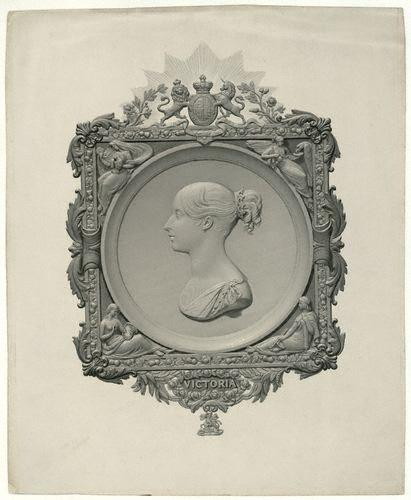As tomorrow will be the 192nd anniversary of Queen Alexandrina Victoria’s birth, I wanted to compile a little album devoted to her image.
As I never grow weary of looking at images of the great lady, discussing her reign, and examining the culture that flourished under her watch, putting this post together was quite a treat. Most of the images were pulled from the National Portrait Gallery and the V&A.
(Golden Jubilee, 1887)
b. 24th May 1819
d. 22nd January 1901
gorgeous coloring
by Charles Knight, 1887
For a queen so often remembered as a symbol of repressive colonialism, rigid class boundaries, and overstuffed parlors chock-a-block with bric-a-brac and dusty aspidistra; I wanted to cobble together a more intimate, approachable collection. It is after all her birthday, would be bad manners to dwell upon unfortunate events.
Hand-colored engraving, 1825-30
Queen Victoria in Her Coronation Robes
1838
oil on canvas
V&A
published 1st May 1838
 Her Majesty Queen Victoria opening her first Parliament
Her Majesty Queen Victoria opening her first Parliament
late 1830’s
1837-40
It isn’t possible to discuss the Queen without Prince Albert of Saxe-Colburg-Gotha, her dashing husband; her passion for him was quite intense, “bliss beyond belief”. They married 10th February 1840.
The public understandably could not get enough of the happy couple; the engravers satisfied their desire with an enormous amount of ephemera.
 The Queen and Prince Albert’s Polka
The Queen and Prince Albert’s Polka
printed 1840
Such passion inevitably brings forth royal issue, the first being Victoria, Empress of Germany and Queen of Prussia.
1844
More after that, ultimately eight children, she was not only the Queen, she was a mother.
A very marketable commodity.
1844 or after
“At Home” images became increasingly popular, they hold my interest well past the fact.
 The Queen and Prince Albert at Home
The Queen and Prince Albert at Home
1844
 Queen Victoria, Prince Albert and family
Queen Victoria, Prince Albert and family
1843
The Queen never seemed to lose her dignity,possessing that well known (often caricatured) aloof air; yet from the sheer volume of material culture bearing her likeness it is quite apparent how fondly she was regarded.
Queen Victoria
14th November 1861
albumen carte-de-visite
From costly wall coverings,
 Queen Victoria’s Golden Jubilee
Queen Victoria’s Golden Jubilee
1887
F.Scott and Son
to “street-art” stencils,
the Queen’s image seems to have been everywhere. This quitepeculiar pipe bowl of 1887 , maker unknown, really captures the Queen’s likeness;although stuffing tobacco in your monarch’s cranium seems a bit irreverent.
1882
National Portrait Gallery
Although her reign was of incredible length, 63 years and 216 days ( but who’s counting?), the inevitable happens, January 22nd 1901 Her Majesty passed.This image is particularly touching with her beloved Albert ever present.
I will close with a happier image.
1863
National Portrait Gallery
If you are as much a monarchy looney as I am, perhaps consider joining The British Monarchy Facebook page.
Until next time,
Babylon Baroque

















































